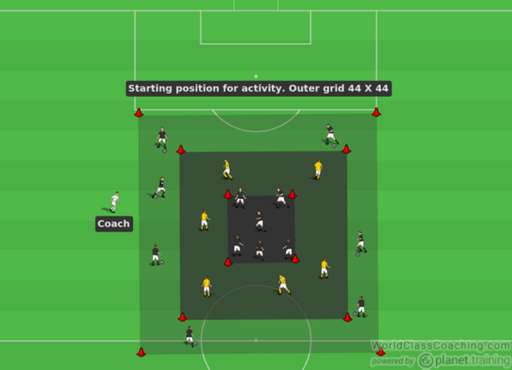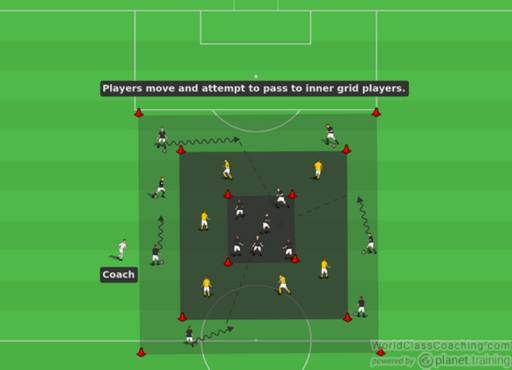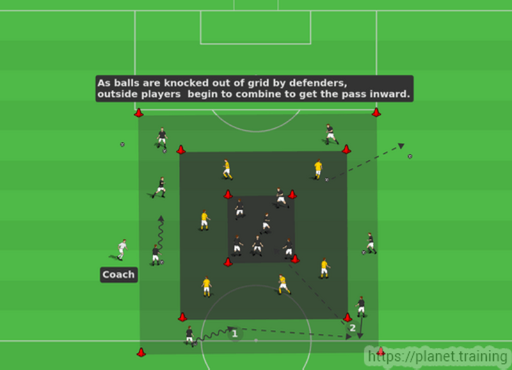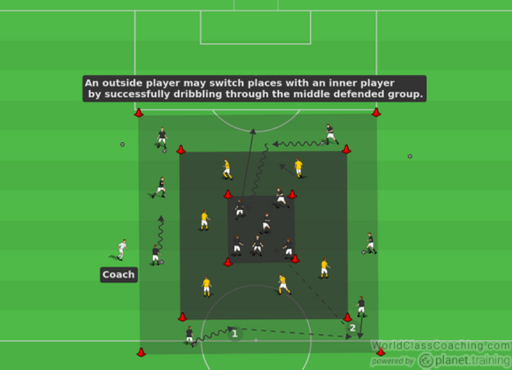By Steven Smith
Area Size: Largest grid of 55 yards by 55 yards. Middle grid of 35 yards by 35 yards and innermost grid of 15 by 15. Coach can adjust depending on age of players and objective.
Teams: Three equally divided teams (one for each grid)
Time: Approximately 15 minutes or extended as part of a warm-up

Setup:
Taking risks and connecting passes can often be counter to each other. This activity will help players find good connecting passes under pressure and in a fairly chaotic setting with many other movements happening at the same time.
This activity emphasizes connecting passes while under controlled pressure (level of pressure controlled by coach). The athletes will need to move to position themselves for connecting passes by short movements. This movement and communication necessary under strict pressure of time and space can have a great effect on connecting passes in game settings.
Execution:
Two groups of six to seven players occupy three grids one inside the next (see graphic below). The idea is for the group on the outermost grid to connect passes to the group on the innermost grid. Start off with each of the outer players possessing a ball to attempt to pass into the center grid. The middle grid is occupied by defenders who cannot leave their grid but works to intercept passes that come through their grid.

The focus is on the outer grid group of players for feedback from the coach. Their movement around their grid is essential for finding the line of passing that will enable them to connect with the inner grid. This means the coach can give feedback on keeping the head up, keeping the ball moving and looking for opportunities. The key cues essential for connecting passes of posture, eye contact and verbal communication are essential as well and the coach can focus on those cues.

Players rotate grid locations with their group after a time limit or after all of the starting balls have been knocked out of the grids by the defending group.
Variations:
- Add goalkeepers to the inner group for receiving with their hands.
- Add goalkeepers to the middle defensive group who can use their hands to intercept passes (increases difficulty for the outside group).
- Add competition with consequences for the losing groups by counting the number of completed passes before their balls are knocked out by the defending group.
- Reintroduce balls knocked out and play for time only and count completed passes.
- As balls are knocked out of play by the middle group the players on the outside grid can combine passes together before attempting to pass the ball to the inner grid.
- Players may attempt to dribble through the middle grid and a player in the inner grid must then switch places with the dribbler on outside grid.

By Steve Smith
Steve Smith has been a men's college coach that holds an NSCAA Advanced National Diploma and a Doctorate in Physical Education.


